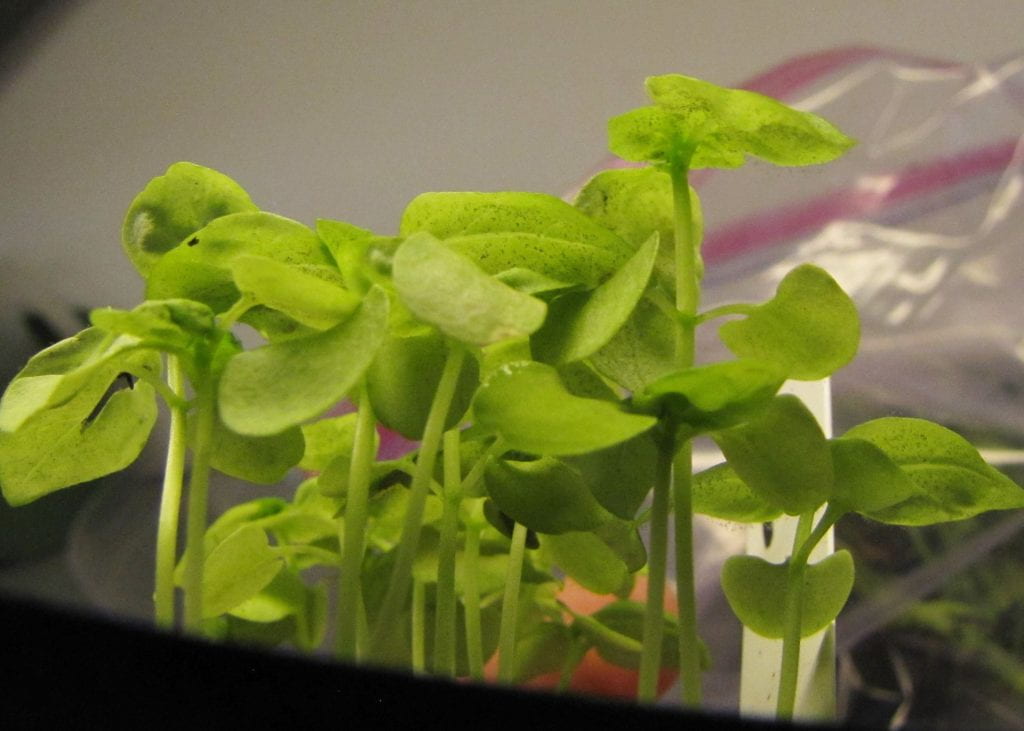Prospera varieties commercially available as of 2023 and Pesto Besto have a single major gene for resistance to downy mildew (Pb1). It imparts a very high degree of resistance, but with this type of resistance there is potential for the pathogen to evolve such that the resistance is not effective against the new pathogen genotype (race), typically because the resistant variety does not recognize it is being infected by this race and so does not respond to prevent infection. Race 0 is used to designate the pathogen genotype controlled by all resistant varieties. Race 1 is the genotype able to infect plants with the Pb1 resistance gene. There have been a few reported occurrences of Prospera being affected, often severely, likely by this new race 1, including in the U.S. The Rutgers DMR varieties are not overcome by race 1 because they have quantitative resistance imparted by multiple genes which is more durable but not as effective as major gene resistance.
September 2022. Prospera severely affected by downy mildew was observed in a commercial greenhouse planting in Suffolk County, NY. To confirm this outbreak was due to race 1 rather than the variety not being Prospera because of a seed mix up, seed of Prospera and DiGenova (a susceptible variety) were sown in the Plant Pathology laboratory at LIHREC and the seedlings were inoculated with spores from the commercial plants. This seed was from the same lots used in the variety evaluation at LIHREC. Approximately 20 seed of a variety were sown in each 24-cell insert (60 mm W X 82 mm L X 58 mm H). They were kept in a growth chamber until inoculated. Inoculation was done when seedlings were at the cotyledon stage. To obtain freshly produced spores, affected Prospera plants from the greenhouse were spritzed with water then kept overnight in the high humidity environment of a closed plastic box. A water solution of spores was prepared the next morning (11 October) by putting leaf tissue with spores in a test tube with 10 ml sterile water, then vortexing to dislodge the spores. A micropipette was used to put droplets of the spore suspension on the adaxial surface of the cotyledons of the Prospera and DiGenova seedlings in two inserts each (18 days post seeding), then the seedlings were enclosed in a plastic bag and left on a laboratory plant shelf with lights off to provide favorable conditions for infection for 1.5 days, after which the bags were opened and lights were turned on during the day. After 7 days the inoculated plants were spritzed with water and enclosed in bags to induce spore production and thereby determine if they were infected.
Seedlings of Prospera inoculated with spores from the commercial plants became severely affected, thereby documenting presence of the new pathogen race (race 1). All seedlings of Prospera and DiGenova had diagnostic sporulation of Peronospora belbahrii. There was no evident difference in abundance of sporulation on the two varieties. This appears to have been an isolated occurrence of race 1 since there were no other reports from growers of affected Prospera, and Prospera exhibited excellent resistance in the replicated variety evaluation with field-grown basil at LIHREC in 2022 similar to previous years, and also in a large-pot demonstration planting with the same varieties at LIHREC. Spores of P. belbahrii were found on other varieties but not on Prospera plants in the field during the growing season, or on branches of Prospera brought back to the lab and kept in water and bagged which was favorable for inducing sporulation on infected leaves on branches of Rutgers DMR varieties handled the same way to serve as controls.
After inducing sporulation, seedlings in additional inserts with new seedings of Prospera and DiGenova were inoculated by spritzing their leaves with water and then gently brushing them with the infected Prospera seedlings to dislodge spores, then incubating the inoculated seedlings in closed plastic bags for a day to provide conditions favorable for infection. This inoculation method was also successful. Sporulation of Peronospora belbahrii was more evident on the inoculated seedlings than is captured in the following photographs of them. Infected cotyledons and leaves typically died soon after inducing sporulation.
Seeds of an experimental variety with a new resistance gene (Pb2) plus Pb1 were also sown. Only 1 seedling was obtained due to low germination of the few seeds sown. Attempts to inoculate this seedling using the brushing method described above were unsuccessful which further supports the conclusion that the pathogen was race 1.
All of the following images taken after the seedlings were put in a plastic bag to induce sporulation.













